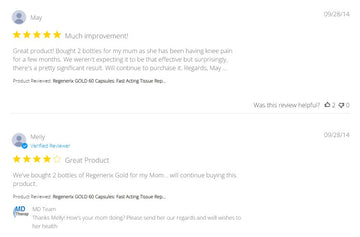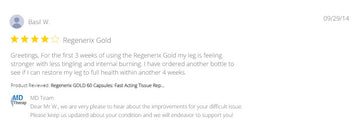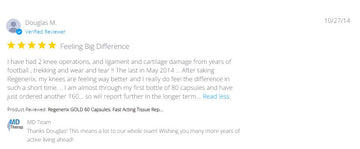Upper Trapezius Stretch: De-tension Your Neck, Ease Shoulder & Headaches
由 MD therapeutics 上 Aug 17, 2025
Why the upper trapezius (UT) stretch helps (the principles)
-
Reduces excessive tone in a common “guard” muscle: The UT often overworks when posture and stress rise. Gentle, sustained stretching can lower resting tone and nociceptive input around the cervical facets.
-
Improves scapulothoracic mechanics: With less UT dominance, lower traps and serratus can upwardly rotate and posteriorly tilt the scapula more freely—useful for reaching and overhead activity.
-
Increases cervical lateral-flexion range: Restoring small, pain-free side-bend helps unload irritated joints and nerve roots, easing neck ache and some headache patterns.
-
Breath-led down-regulation: Slow exhales reduce sympathetic arousal, helping the stretch “stick.”
How to do it (precise, range-aware)
-
Posture: Sit tall on a chair. Anchor your right hand under the seat (arm straight, shoulder gently depressed).
-
Position: Tilt your head left (ear toward shoulder) until you feel a light stretch on the right side of your neck.
-
Optional assist: With the left hand, lightly cradle the right side of the head to fine-tune the angle (no pulling). Keep the nose forward (don’t rotate) for pure UT bias.
-
Breathe: Inhale easy; exhale and soften into a mild stretch (2–3/10).
-
Dosage: 2–3 sets × 20–30 s/side, 1–2×/day.
-
Variations:
-
Add a tiny chin tuck to reduce facet pinch.
-
If shoulders are irritable, let the anchoring arm dangle with a light hand weight instead of tucking under the seat.
-
-
Safety: Stop if you feel dizziness, radiating arm symptoms, or sharp pain. Never yank on the head.
Limits of exercise alone
-
Systemic drivers (sleep, stress, diet, metabolic health) still sensitize the neck–shoulder region.
-
Flares cap loading: People under-dose or stop when pain spikes.
-
Capacity gaps: Most need scapular strength (lower traps/serratus), thoracic mobility, and workstation fixes alongside UT stretching.
-
Connective-tissue change is slow: Gains accrue over months; consistency + recovery + nutrition beats “stretching only.”
Why add nutritional correction
-
Improve circulation so post-session tissues get oxygen and nutrients.
-
Promote repair by supplying matrix inputs (e.g., collagen peptides, hyaluronic acid).
-
Reduce excessive inflammation so daily practice stays tolerable.
-
Avoid tissue damage by buffering oxidative and catabolic stress from repetitive loading.
Botanicals & nutrients often paired with neck/shoulder rehab
(Blends traditional lore with published research; evidence ranges from promising to mixed. Check interactions and personal suitability with your clinician.)
-
Ginger (Zingiber officinale): Traditional Ayurveda/East Asian use for circulation and “wind-damp” aches; standardized extracts show modest symptom support in some osteoarthritis trials.
-
Turmeric / Curcumin (Curcuma longa): Longstanding Ayurvedic use; bioavailability-enhanced curcumin has reduced arthritis pain and improved function in multiple studies; culinary turmeric alone has little curcumin.
-
Boswellia / Frankincense (Boswellia serrata): Ayurveda’s shallaki; standardized extracts associated with improved pain/function in OA cohorts.
-
Winter Cherry / Ashwagandha (Withania somnifera): Adaptogen supporting resilience; clinical work suggests immunomodulatory effects and symptom support that may aid training tolerance.
-
Collagen Peptides (Type II focus): Provide peptides that may support cartilage/connective-tissue metabolism—useful with posture retraining and strengthening.
-
Hyaluronic Acid (oral): Contributes to joint lubrication/viscosity; used to support smooth motion and comfort.
-
Cat’s Claw (Uncaria spp.): Amazonian tradition for “rheumatism”; small trials show short-term pain improvements, though evidence remains limited.
The practicality problem
-
Food-only dosing is hard: Daily, research-like intakes of curcumin or ginger via meals are impractical.
-
Pill burden & cost add up: Buying six–seven separate products (ginger, turmeric, boswellia, ashwagandha, collagen, HA, cat’s claw) means many capsules and a higher monthly spend versus one comprehensive formula.
A convenient all-in-one option: Regenerix Gold™
Prefer UT stretching + nutrition without juggling bottles?
-
What’s inside: Hydrolyzed Type II Collagen, Hyaluronic Acid, and a proprietary blend of Ginger, Turmeric, Frankincense (Boswellia), Cat’s Claw, and Winter Cherry (Ashwagandha)—the same seven ingredients discussed above—combined to promote healthy joint and muscle function and support everyday recovery.
-
Dosing: 2–3 capsules daily.
-
Price: $98 a bottle.
-
Why it fits here: One product covering seven evidence-linked ingredients is simpler—and typically more cost-effective—than buying 5–7 separate supplements.
-
Track record: Recommended by doctors and physical therapists internationally for about a decade (individual clinician views vary).
Supplements support healthy function; they don’t diagnose, treat, or cure disease. Check interactions (e.g., anticoagulants with turmeric/ginger/boswellia) and suitability with your clinician.
This week’s mini-plan
-
Daily: UT stretch 2–3×20–30 s/side; gentle chin tucks 2×8–10 reps.
-
3×/wk capacity work:
-
Scapular retractions (band) 2–3×12–15,
-
Wall slides (ribs down) 2–3×8–10,
-
Thoracic extension (roller) 1–2×8–10.
-
-
Ergonomics: Raise screens to eye level; keep elbows near the torso; use a headset for calls.
-
If symptoms spike: Shorten hold times by 50% or switch to micro-range mobility until discomfort settles within 24 h.



